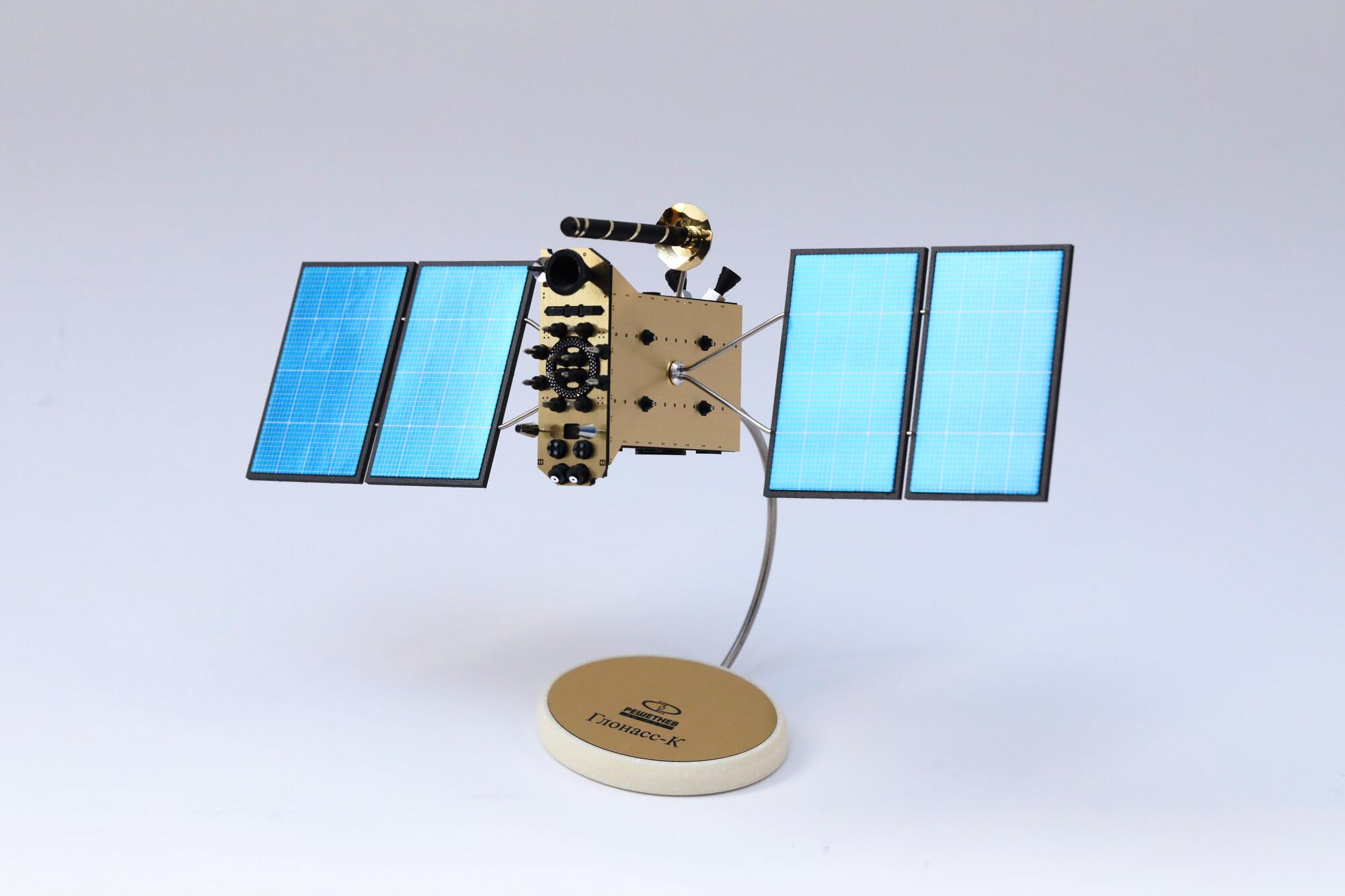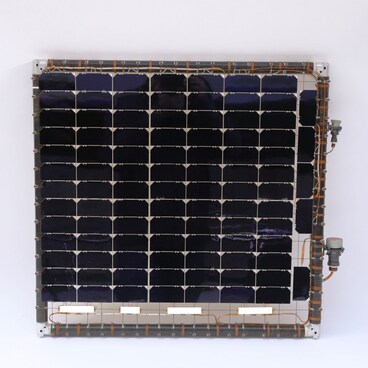Glonass-K is a Russian telecommunications satellite, one of the third generation of GLONASS (the Global Satellite Navigation System) satellites. Satellites of this type are used to determine the geographical coordinates of locations or vehicles land, in the air or in the water, and, if moving, their speed and direction.
Model of the Glonass-K satellite
Creation period
2017
Place of сreation
Zheleznogorsk, Krasnoyask Territory
Dimensions
9x32x5 cm
9 х 32 х 5 cm
9 х 32 х 5 cm
Technique
Small-scale industrial production
Collection
Exhibition
2
Open in app#8
Information Satellite Systems named after M.F. Reshetnev JSC
Model of the Glonass-K satellite, scale 1:50
#6
#9
The history of the GLONASS system dates back to the 1970s — its development began in the Applied Mechanics Design Bureau, located in the closed city of Krasnoyarsk-26, in the USSR (now Information Satellite Systems named after M.F. Reshetnev JSC, Zheleznogorsk). In 1993 the system was approved for use, but it was abandoned by the end of the decade, because of reductions in the number of satellites that were in orbit.
#10
In 2001 a Federal Target Program for the revival of the GLONASS satellite network project was approved- this was seen as essential in order to ensure Russia’s autonomy in relation to navigation technology. December 10 2003 saw the launch of the second-generation Glonass-M satellites. By 2010 there were 24 GLONASS satellites in orbit — the number required for the system to become fully operative.
#11
In order to renew the GLONASS orbital system and upgrade its technical specifications, the third-generation Glonass-K navigational satellites were developed. This model differs from its predecessors in several ways: it is lighter, its service life has been extended, the technology it is equipped with is much more accurate, and it is more compatible with foreign navigational systems (GPS/Galileo/Compass).
#12
The first Glonass-K satellite was launched on February 26 2011, and the second one was launched on December 1 2014. The dimensions of the Glonass-K satellite are 2.53×3.01×1.43 meters. It weighs 935 kilograms (the Glonass-M weighed 1415 kilograms). It orbits at a height of 19 100 kilometers. It takes 11 hours 15 minutes and 44 seconds to complete a single orbit of the Earth. It has an guaranteed active service life of 10 years (compared with 7 years for the Glonass-M). Its solar panels provide 1 460 W of electricity. The satellite transmits navigation signals using 4 open wavelengths: L1OF (1602 MHz), L2OC (1248 MHz), L2OF (1246 MHz), L3OC (1202 MHz). It also uses two other wavelengths to transmit more precise geolocation data, for the use of the Russian Armed Forces: L1SF (1592 MHz) и L2SF (1237 MHz).
#13
New satellite models — Glonass-K2 and Glonass-KM — are currently under development, and the first launches are planned for 2022 and 2025 respectively.
#14
This model of the Glonass-K satellite, together with models of other satellites, was given to the museum in 2017 to mark the opening of the Children’s Space Center in Kirov.
#15
Ministry of Culture of the Russian Federation
read morehide
00:00
00:00
1x
Model of the Glonass-K satellite
Creation period
2017
Place of сreation
Zheleznogorsk, Krasnoyask Territory
Dimensions
9x32x5 cm
9 х 32 х 5 cm
9 х 32 х 5 cm
Technique
Small-scale industrial production
Collection
Exhibition
2
Open in app
Share



